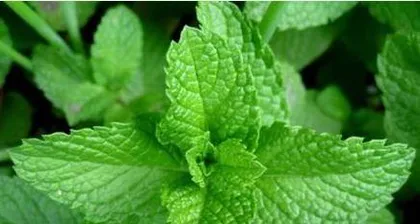
Mint is highly adaptable to its environment, but to grow it well, the following conditions are essential:
Sunlight: Mint likes sunlight but shouldn't be in direct sun. Ensure 4-6 hours of light per day.
Water: Mint prefers a moist environment but is afraid of waterlogging. The soil should be kept slightly moist.
Soil: Choose loose, well-draining soil, such as sandy soil or leaf mold.
Mint Planting Methods
There are two main ways to plant mint: from seeds and from cuttings.
Seeds: Soak mint seeds in water until they swell. Then, scatter them on the soil surface, cover with a thin layer of soil, and keep the soil moist. They should germinate in about a week.
Cuttings: Cut mint stems to 10-15 cm in length, insert them into the soil, and keep the soil moist. They should root in about two weeks.
Mint Care TipsWatering: Mint likes a moist environment but is sensitive to waterlogging. Water appropriately to keep the soil slightly moist.
Fertilizing: Mint grows vigorously and needs sufficient nutrients. Apply a light fertilizer, such as well-rotted chicken manure or soybean cake fertilizer, once a month.
Pruning: Mint grows quickly, so prune it in time to remove yellowed leaves and weak branches to promote plant growth.
Pest and Disease Control: Mint is susceptible to pests like aphids and spider mites, so it's important to control them promptly.
Indoor Mint CareWhen growing mint indoors, pay attention to the following points:
Lighting: If there is insufficient indoor light, place the mint near a window or use a grow light to supplement the light.
Ventilation: Poor indoor ventilation can cause mint leaves to turn yellow, so ensure good air circulation.
Watering: Indoor air can be dry, so it's necessary to increase the watering frequency appropriately to keep the soil moist.
Uses of MintMint has a wide range of uses. Here are some common ones:
Tea: Mint tea has the effects of clearing heat, detoxifying, and refreshing the mind. Stewing Meat: Mint can remove the fishy smell and make the meat more delicious. Making Soup: Mint can add a fresh aroma to soups and enhance their flavor.Repelling Mosquitoes: The fresh scent of mint can repel mosquitoes and protect your family's health.
Edible: Mint can be eaten directly, such as in mint candies or mint ice cream.
Mint PropagationThere are several main methods for propagating mint:
Division: Divide the mint's rhizomes into small pieces, each with a section of rhizome and leaves, and replant them.
Cuttings: Cut mint stems to 10-15 cm in length, insert them into the soil, and keep the soil moist. They should root in about two weeks.
Seeds: Scatter mint seeds on the soil surface, cover with a thin layer of soil, and keep the soil moist. They should germinate in about a week.
Things to Note When Growing MintAvoid Direct Sunlight: Mint is not tolerant of strong light, so avoid direct sun to prevent leaf scorch.
Avoid Waterlogging: Mint is afraid of waterlogging, so avoid waterlogged soil to prevent root rot.
Avoid Pests and Diseases: Control pests and diseases in a timely manner to keep the plant healthy.Growing mint is actually very simple. As long as you master the tips above, you can easily grow a beautiful pot of mint. Give it a try, and let the fresh aroma of mint accompany you every day!